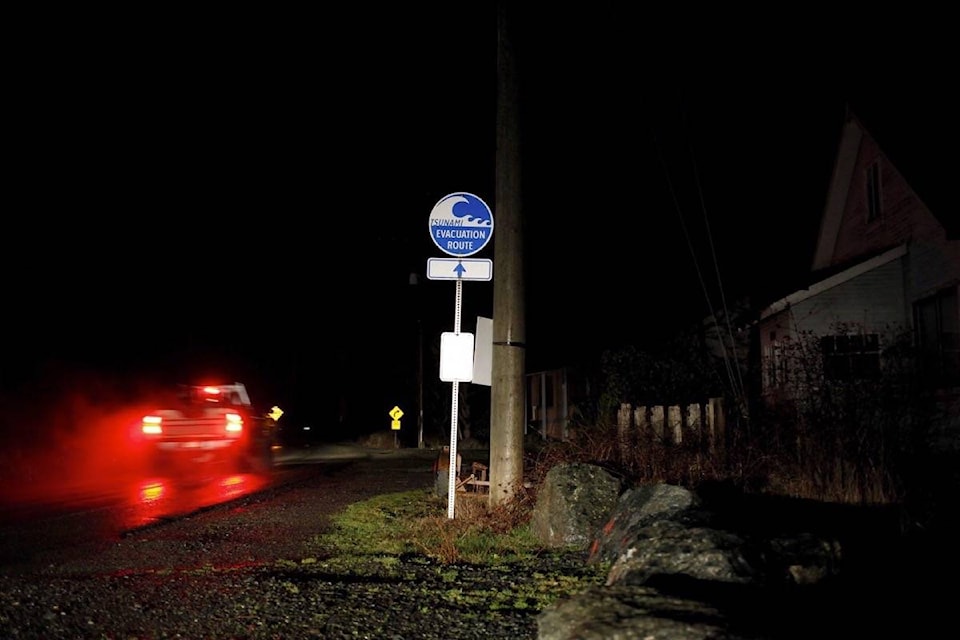When tsunami-alert sirens rang out in the dead of night in Port Alberni 14 months ago, most people fled for higher ground but some didn’t recognize the emergency signal, says a new study.
A magnitude 7.9 earthquake off the coast of Alaska Jan. 23, 2018, at 1:31 a.m. prompted a tsunami alert along much of Canada’s West Coast, including Port Alberni on Vancouver Island. Port Alberni was hit by Canada’s largest tsunami in March 1964 after a 9.2 earthquake off the Alaska coast.
READ MORE: Tsunami warning prompts evacuations in Port Alberni
The January 2018 tsunami alert was lifted at 4:30 a.m. but not before thousands of people left their homes in various states of fear and confusion, say researchers from UBC’s school of community and regional planning in a report released Thursday.
Ryan Reynolds, one of the report’s authors and a risk modelling expert, said the report serves as a preparation blueprint for coastal communities that face the ever-present threat of tidal waves.
“This was really an opportunity for us to re-evaluate our own preparedness in terms of coastal hazards,” he said in an interview. “This is really the only test we’ve had recently of a tsunami evacuation to see what impact that has on a community.”
Port Alberni saw more than 90 per cent of households in warning zones evacuate to the safety of higher ground, but there were glitches before the alert was lifted at 4:30 a.m., said Reynolds
Some people didn’t understand why community sirens were blaring and others were looking for confirmation of the alert on social media, but the community’s emergency response system did not immediately inform residents of the potential danger, he said.
“The first thing people do is they try to verify the information,” Reynolds said. “They’re not sure if the siren is a warning or if perhaps the siren’s broke and it’s just going off.”
Elderly people try to verify the alert on television or radio while younger people look to social media, he said. Confusion arose in Port Alberni because as emergency response teams were being activated, the city’s social media sites stayed blank for much of the alert period, said Reynolds.
The research involved interviews with about 450 local residents and numerous city officials, he said.
Reynolds recalled meeting a family that had moved to the community three days before the alert and were roused by neighbours who urged them to flee.
“They didn’t know what the siren meant and they had young kids,” he said. “Suddenly, they’re faced with a sound they don’t know. They look out their door and all they see is neighbours getting in their vehicles. For them this was kind of like the Apocalypse.”
But Reynolds said the research found more than 60 per cent of residents have updated their tsunami evacuation plans since the alert, and community and regional officials have better co-ordinated social media services and response tactics.
“Our community is very tsunami aware,” said Port Alberni Mayor Sharie Minions. “The tsunami definitely caught people’s attention to make sure they definitely have a plan.”
She said the threat of a tsunami is something that’s never far from the minds of those in the community.
Reynolds said Port Alberni is better prepared today for a tsunami than it was last year.
“If this were to happen tonight at 2 a.m. the events would be much smoother, much quicker and we would have much better communication with people,” he said. “They’re kind of battle-tested.”
Dirk Meissner, The Canadian Press
